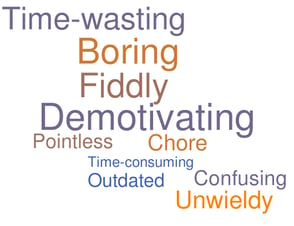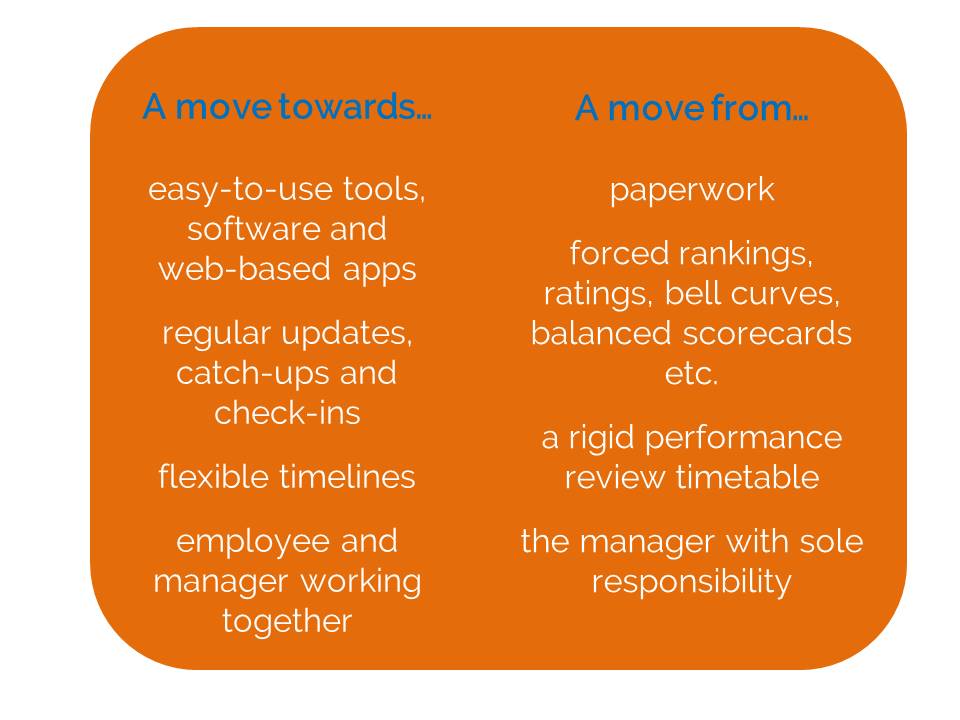Continuous Performance Management -
and how to get started!
We all know that Performance Management (PM) can be deeply unpopular as a process in organisations.
If you asked managers and individuals who have to engage in a year-end assessment of their staff’s performance, what would they say?

But, as a management practice Performance Management endures - and for good reason.
Despite a number of large organisations publicly moving away from a more traditional, annual, rating-based method, Performance Management remains a core process for most companies. It's their primary means of:
- assessing and measuring individual performance;
- communicating organisational/strategic priorities and objectives:
- and – in many cases – contributing to pay and reward decisions.
Many of the big names who have ‘scrapped’ performance appraisal have done so in favour of a slicker, more agile, personalised and informal approach.
 All of this has all contributed to the rise of Continuous Performance Management (CPM, or agile performance management) over the past 3 or 4 years.
All of this has all contributed to the rise of Continuous Performance Management (CPM, or agile performance management) over the past 3 or 4 years.
Of course, many organisations have sought to encourage ongoing conversations and a ‘little and often’ approach for many years, often without success. Recent trends have probably been partly fuelled by high-profile commentary from organisations such as Deloitte, Accenture, Adobe and Gap, but are very much in line with the demands of modern businesses and current thinking in the HR and business psychology spaces.
This Guide is aimed at HR professionals and business leaders who have responsibility for Performance Management.
We'll take you through some of the key considerations and fundamentals you need to have in place if you are considering moving to a more agile way of looking at performance, or at introducing CPM into your organisation if you are new to performance management. So, let's get started.
In Chapter 1 we'll look at what Continuous Performance Management is.
